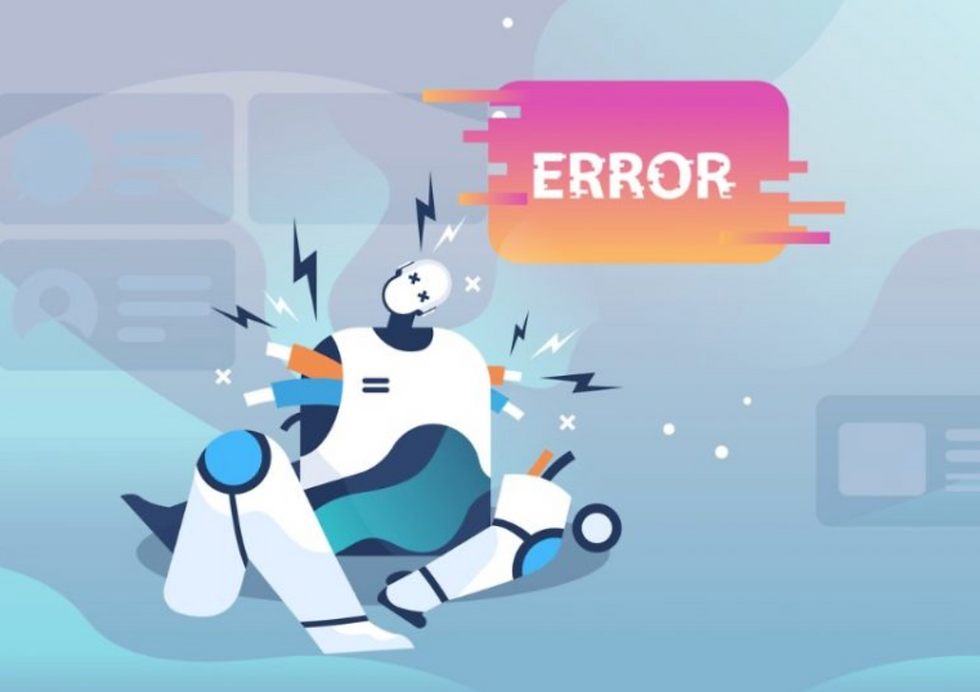The Silent Failure of AI Projects in the Real World
- Urvee Nikam
- 12 minutes ago
- 4 min read
Because sometimes, the most important stories are the ones we’re not telling.

There’s a strange silence around the failures of AI.
We hear the success stories. The AI software that detects cancer earlier than doctors. The model that writes poetry. The chatbot that can hold a conversation so well it almost feels human. These stories dominate headlines, keynotes, and pitch decks.
But the truth is, behind the scenes, a very significant number of AI projects don’t work out. They stall, get scrapped and fade into archives and shared drives, labeled as "in progress" long after the excitement has worn off. No headlines. No press releases. Just silence.
Why So Many AI Projects Fail (Quietly)
The reasons aren’t flashy. In fact, they’re frustratingly ordinary.
Bad Data: AI models run on data. But in the real world, data is usually messy, incomplete, biased, or even just plain wrong. Training a model on flawed data leads to flawed outcomes.
Unclear Goals: Sometimes, with the whole new evolving tech ordeal, teams rush to use AI without a clear understanding of the problem they’re trying to solve. And that's how we end up with impressive tech with no real use case.
Integration Issues: Building an AI model is one thing. Getting it to work with existing systems, tech, and people is another. So many projects tend to fall apart at the integration stage.
Lack of Long-Term Planning: AI isn’t magic. It requires constant maintenance, updates, and monitoring. Many teams underestimate this and lose momentum after the initial build.
Cultural Resistance: In quite a few cases, the people who are supposed to use the AI system don’t trust it (or just don’t want it). If adoption fails, the project fails, no matter how good the tech is.
The Human Cost of Hype
The silence isn’t just inconvenient, it’s genuinely harmful. When we only talk about the good side, we create a skewed picture of its reality. Organizations invest in AI expecting quick wins, only to find themselves confused and disappointed when things don’t work as promised.
Worse, the pressure to perform can lead teams to stretch the truth. Reports are padded, limitations downplayed, and setbacks reframed as "learning experiences." This leads to a cycle where the real lessons get lost, and the same mistakes get repeated elsewhere.
The human cost also shows up in broken trust. Internal teams may feel burned out or cynical after working on failed AI rollouts. Leadership becomes hesitant to invest again. This creates a chilling effect where future innovation is slowed not only by technological limits, but also by fear.
The Gap Between Lab and Reality
Many AI projects that perform well in controlled environments fall apart when deployed in the real world. The assumptions made in testing conditions don’t always hold up in production. A model trained on perfect datasets might fail when faced with inconsistent inputs, real-time user behavior, or exceptions the developers didn’t really think of.
This disconnect highlights the importance of involving domain experts early, investing in real world data collection, and stress-testing systems under realistic conditions. AI isn’t plug-and-play, it’s more like a full time long-term relationship that requires care, feedback, and commitment.
What Needs to Change
If we want to build better AI and of course trust in it, we need to change how we talk about failure. That means:
Normalizing post-mortems: Treat failed projects as learning opportunities. What didn’t work? Why? What would you do differently next time?
Being transparent about limitations: Share the boundaries of what the system can do and what it can’t. This builds trust, not doubt.
Focusing on long-term value, not short-term hype: A solid, well-integrated AI system that improves gradually is significantly more valuable than a flashy prototype that never scales.
Building interdisciplinary teams: AI doesn’t live in a vacuum. It needs input from designers, users, domain experts, ethicists, and engineers. Collaboration leads to stronger outcomes.
Learning From the Quiet Ones
The AI projects that fail aren’t worthless, they're actually incredibly valuable. They show us what real-world implementation looks like. They teach us about the importance of context, humility, and good planning. But to learn from them, we have to talk about them.
We need more honesty in the AI space. More reflection. More spaces where teams can admit what didn’t work without the fear of judgment. Failure should be part of the story, not something we hide for better numbers.
Moving Towards Better AI
It’s okay to be excited about what AI can do. But we also need to be clear-eyed about what it takes to get there. Building successful AI isn’t just about algorithms, it's about people, systems, and sustainability.
The projects that quietly failed? They’re not dead ends. They’re stepping stones. If we let them speak, they might just lead us to something better. One of the first steps to creating something that works is taking into account what did not work.
Reference List
B, J. (2025). 80% of AI Projects Ultimately Fail (And Yours May Too — So Plan When to Fold). [online] Medium. Available at: https://medium.com/%40julian.burns50/80-of-ai-projects-fail-and-yours-probably-will-too-but-that-is-ok-a90752795089
Dilmegani, S. and Ermut, S. (2025). AI Fail: 4 Root Causes & Real-life Examples in 2025. [online] AIMultiple. Available at: https://research.aimultiple.com/ai-fail/?utm
Meller, W. (2025). 7 Brutal Reasons AI Projects Die Quietly in Companies. [online] Projectmanagement.com. Available at: https://www.projectmanagement.com/blog-post/78530/7-brutal-reasons-ai-projects-die-quietly-in-companies?utm
Pietro, G.D. (2024). Why 85% of AI projects fail and how Dynatrace can save yours. [online] Dynatrace news. Available at: https://www.dynatrace.com/news/blog/why-ai-projects-fail/?utm
Ryseff, J., De, B.F. and Newberry, S.J. (2024). The Root Causes of Failure for Artificial Intelligence Projects and How They Can Succeed: Avoiding the Anti-Patterns of AI. [online] Rand.org. Available at: https://www.rand.org/pubs/research_reports/RRA2680-1.html?utm
Schmelzer, R. and Watch, K. (2024). Why Most AI Projects Fail: 10 Mistakes to Avoid | PMI Blog. [online] Pmi.org. Available at: https://www.pmi.org/blog/why-most-ai-projects-fail?utm
.png)





Comments